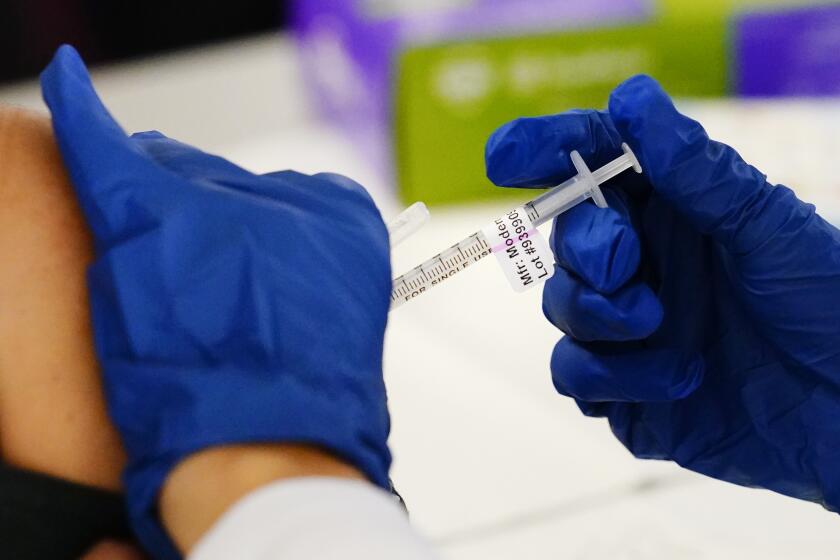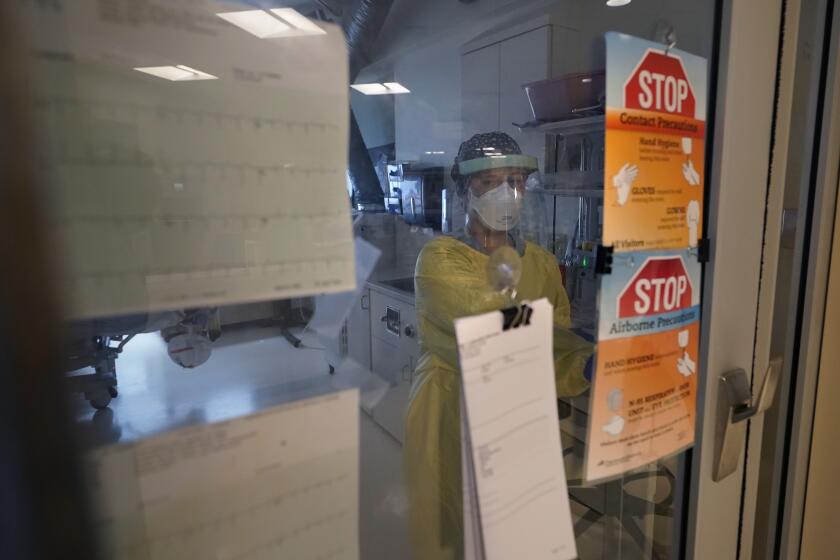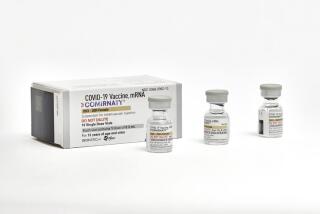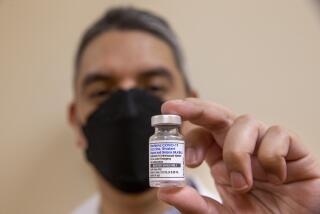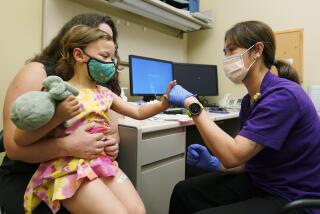What you need to know about COVID vaccines for little kids

- Share via
COVID-19 vaccinations for the youngest children just might be a step closer.
Moderna intends to seek U.S. authorization for kid-sized shots, releasing early study results Wednesday that suggest the two small doses work in tots younger than 6. Within weeks, competitor Pfizer hopes to learn if three of its even lower-dose shots do, too.
Here’s what is known so far, and what’s next before the nation’s 18 million children under 5 can become eligible for vaccination.
Moderna’s results
Moderna says tots as young as 6 months developed high levels of virus-fighting antibodies from shots containing a quarter of the dose given to adults. Full study results are yet to come but the early findings suggest the vaccine may protect against severe illness in kids just as it does in adults.
Moderna says that its low-dose COVID-19 vaccine works in babies, toddlers and preschoolers, and that it will seek authorization for emergency use.
One complication: Moderna’s study was conducted during the Omicron surge, and none of the COVID-19 vaccines protect as well against infection with that super contagious variant — at any age — as they do against earlier variants.
Sure enough, the vaccine proved just under 44% effective at preventing milder infections in tots up to age 2, and nearly 38% effective in the preschoolers. But importantly, there were no severe illnesses in the study involving kids.
Pfizer’s study
The vaccine made by Pfizer and its partner BioNTech is the only one currently available for children in the U.S. Those 12 and older get adult-strength shots, and 5- to 11-year-olds receive a third of that dose.
Pfizer is testing even smaller shots, a tenth of the adult dose, for kids under 5. Early results showed two shots produced enough antibodies to protect babies and toddlers, but fell short for preschoolers.
Children’s immature immune systems often require multiple doses of vaccines to properly protect against other diseases. So rather than testing a higher dose, Pfizer gave kids a third shot. Results are expected in early April.
What’s next?
Once the Food and Drug Administration has an application from one or both companies, it’s expected to publicly debate the evidence with its scientific advisers. If the FDA authorizes shots for the littlest kids, the Centers for Disease Control and Prevention then will convene its own experts before making a recommendation about who should get them — perhaps all youngsters, or perhaps only those at higher risk from COVID-19.
While cases are dropping for now in the U.S., other countries are seeing increases. A lull could be “the best time to get immunized because then you’ll be protected by the time the next surge starts,” said Dr. Bill Muller of Northwestern University, a researcher for Moderna’s pediatric studies.
Why do kids need a vaccine?
While COVID-19 generally isn’t as dangerous in youngsters as adults, some do become severely ill or even die. About 400 children younger than 5 have died from COVID-19 since the pandemic’s start, according to the CDC.
The Omicron variant hit children especially hard, with those under 5 hospitalized at higher rates than at the peak of the previous Delta surge, the CDC found.
Hospitalizations of U.S. children under 5 with COVID-19 have soared, a worrisome trend in youngsters too young to be vaccinated.
About 57% of those ages 12 to 17 have gotten two Pfizer doses so far, and 27% of those 5 to 11.
What about Moderna shots for older kids?
The FDA limits Moderna’s vaccine to adults although it’s used in kids as young as 6 in certain other countries. The FDA is looking into a very rare side effect — heart inflammation — that sometimes occurs in teens and young adults, mostly males.
Moderna is giving the FDA updated safety information that it says backs adult-size doses for 12- to 17-year-olds, and also is seeking authorization to use half that dose in 6- to 11-year-olds. Regulators are expected to consider all three age groups at once.
